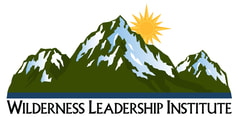
Snowpack Summary February 3, 2022
Posted by Allen Giernet @ 6:20pm (this summary expires in 48 hours)
This summary applies to backcountry areas only.
The Bottom Line –
Firm and icy conditions will be present in the morning be wary on steep exposed terrain where a slip and fall could lead to an uncontrollable slide for life. Variable surface conditions and receding snow will make for challenging travel and descents. Afternoon high temperatures should keep loose wet snow instability on your mind especially on steep sun exposed slopes that still hold snow. If you begin sinking several inches into snow change your travel plans.
If you venture out please submit your observations to the avalanche center Submit Reports page.
Posted by Allen Giernet @ 6:20pm (this summary expires in 48 hours)
This summary applies to backcountry areas only.
The Bottom Line –
Firm and icy conditions will be present in the morning be wary on steep exposed terrain where a slip and fall could lead to an uncontrollable slide for life. Variable surface conditions and receding snow will make for challenging travel and descents. Afternoon high temperatures should keep loose wet snow instability on your mind especially on steep sun exposed slopes that still hold snow. If you begin sinking several inches into snow change your travel plans.
If you venture out please submit your observations to the avalanche center Submit Reports page.
General Summary
Following a couple days of below freezing temperatures and strong winds expect to find fast and firm surfaces throughout the ranges. Bring tools (ice axe and crampons) to manage firm snow conditions especially in steep terrain. Plan your travel according to the conditions and be prepared for variable conditions throughout the mountains and throughout the day. Firm conditions will be prevalent in the morning and may remain at higher elevations and on Northerly aspects that receive little solar input. Freeze thaw conditions will return tomorrow with lighter winds and warmer afternoon highs under clear skies. Loose wet snow instability should be in the back of your mind especially on steep slopes that receive sun exposure through the day. If you find yourself sinking several inches into the snow move out of steep terrain, especially with exposed hazards below such as rocks, drop offs and trees. Be aware of the changes that may happen for your return route later in the day.
Following a couple days of below freezing temperatures and strong winds expect to find fast and firm surfaces throughout the ranges. Bring tools (ice axe and crampons) to manage firm snow conditions especially in steep terrain. Plan your travel according to the conditions and be prepared for variable conditions throughout the mountains and throughout the day. Firm conditions will be prevalent in the morning and may remain at higher elevations and on Northerly aspects that receive little solar input. Freeze thaw conditions will return tomorrow with lighter winds and warmer afternoon highs under clear skies. Loose wet snow instability should be in the back of your mind especially on steep slopes that receive sun exposure through the day. If you find yourself sinking several inches into the snow move out of steep terrain, especially with exposed hazards below such as rocks, drop offs and trees. Be aware of the changes that may happen for your return route later in the day.
General Mountain Weather Forecast |
2-3-22 Thursday Morning will be cold with mostly clear to sunny skies and will warm to several degrees warmer than yesterday. Northerly winds will be moderate to strong and gusty through the morning and diminish through the day. The Wind Advisory will remain in effect until noon today.
Friday will begin cold and become warmer with moderate winds and clear skies.
Saturday will continue with a cold morning and become warmer then the day before with mostly light to moderate winds.
The freeze thaw cycle will return this weekend as overnight temperatures will remain below freezing each day into next week while day time highs gradual rise into the middle of next week. Skies will be mostly clear with some light clouds next week. Winds will be light to moderate with periods of gusty winds over the next several days.
Friday will begin cold and become warmer with moderate winds and clear skies.
Saturday will continue with a cold morning and become warmer then the day before with mostly light to moderate winds.
The freeze thaw cycle will return this weekend as overnight temperatures will remain below freezing each day into next week while day time highs gradual rise into the middle of next week. Skies will be mostly clear with some light clouds next week. Winds will be light to moderate with periods of gusty winds over the next several days.
Click here for this Season's Snow Pack Summaries
To better understand the challenges and potential variability over the large area we are producing information for please read our Snowpack Summary - Format and Limitations
Disclaimer:
This Bulletin is designed to generally describe conditions where local variations always occur. Travelers are advised to exercise caution and make slope specific evaluations. As always, please treat this bulletin with appropriately guarded skepticism and make your own assessments. Help to provide more information to the community by reporting your observations
This Bulletin is designed to generally describe conditions where local variations always occur. Travelers are advised to exercise caution and make slope specific evaluations. As always, please treat this bulletin with appropriately guarded skepticism and make your own assessments. Help to provide more information to the community by reporting your observations
Click on the links below for the latest information
Latest Observtions
Click on the observation to go to the full report
|
Observation type -
Snowpack Location - San G Upper North Chutes Date (yyyymmdd) - 20220130 Comment - North Chutes up San Gorgonio were fairly consolidated. There was 1 to 2" of new snow above 8500' from the surprise upper level snow storm, 1/29/22. On the upper slopes (above 11,200'), the north wind blew the new snow away already. Final 300 to 400' of the chutes are icy, down to the base layer from the week-long North wind event. Some crowns/ broken cornices/Slab breaks along the entire upper northface of San G. Climbable and skiable with caution on the upper slopes of the north chutes. |
Observation type
Snowpack Location - Mt. Pinos Summit area Date (yyyymmdd) - 20220125 Comment - If you like variety, head for Mt. Pinos: corn, powder, crud, windpack, suncups, crust. Snow depth on the summit ridge holding at one to two feet. Get much lower on anything but the north aspect and it diminishes rapidly. I toured to the summit and decided to try the southwest slope--best run of the day, about 300 yards of easy-turning corn. The run by the microwave tower was irregular, crusted and fairly unskiable. |
Observation type
Snowpack Location - Ice House Cyn. & Big Horn Peak Date (yyyymmdd) - 20220123 Comment Trail alternates frequently between slippery ice patches and bare trail starting about half way to the saddle. Traction devices are required about 3/4 up. Lots of debris fields at the bottom of the canyon from avalanches, but these are old and are primarily on the south-facing slopes, where there is no longer enough snow mass to trigger a slide. Some fractures caused by skiers on north slopes. 2-3 feet of well-consolidated snow between the saddle and Bighorn Peak. 6" of penetration in most areas with sparse patches of hard ice in the more exposed and sun-facing slopes. No evidence of avalanches above the saddle. I did not hike Timber, but my visual observations and reports from other hikers indicates that the trail switches frequently between compacted snow, hard ice, and bare trail. |
Observation type
Snowpack Location - Mt Hawkins Date (yyyymmdd) - 20220123 Comment - We skied the N facing trees on the shoulder of Mt. Hawkins. On our skin from Islip Saddle, it was apparent that there was a widespread natural avalanche cycle during the last storm - numerous crowns were visible crowns on road cuts and on convexities higher up. Our initial thought was to ski a solar aspect to take advantage of softening snow, but any warming effects of the sun and air temp seemed to be nullified by the wind, and the E facing terrain remained quite firm. We decided to ski the N facing trees, as we thought the crust would be less robust (more for safety than ski quality) and thought we could potentially even find some NSF (none to be found, as expected). The skiing was still quite firm, and we managed risk by sticking to A few thoughts on the day: - Boot/ski crampons + axe were a necessity for safe travel. - There were a number of old bed surfaces that were easy to miss and were incredibly slick. Keep an eye out for crowns/old debris piles and if you're going to ski a bed surface, do it super carefully! - Would not recommend skiing in the San Gabriel's right now unless you are highly confident in skiing super firm conditions where a fall at speed could carry some pretty serious consequences. - Beautiful day out in the mountains! |
General Caution
You should always use safe terrain management and carry avalanche rescue equipment in the backcountry. Most avalanches are triggered by someone in the party or the victim. Practice with your rescue gear often and be prepared should the worst happen. Though we do not have an avalanche forecast center in this area as of yet, the information posted and shared here as well as the resources available on this site will help to make informed decisions for your backcountry travels. Use avalanche forecasts in your travels wherever available and be aware that avalanche ratings are general information. Elevation, location, geographic variability’s, slope aspect and angle all have effects on the particular area you travel in. This is only one piece of the information you should use in your decision making process. There is no substitute for avalanche education, for more resources and information as well as education please refer to our resources page.
You should always use safe terrain management and carry avalanche rescue equipment in the backcountry. Most avalanches are triggered by someone in the party or the victim. Practice with your rescue gear often and be prepared should the worst happen. Though we do not have an avalanche forecast center in this area as of yet, the information posted and shared here as well as the resources available on this site will help to make informed decisions for your backcountry travels. Use avalanche forecasts in your travels wherever available and be aware that avalanche ratings are general information. Elevation, location, geographic variability’s, slope aspect and angle all have effects on the particular area you travel in. This is only one piece of the information you should use in your decision making process. There is no substitute for avalanche education, for more resources and information as well as education please refer to our resources page.






















